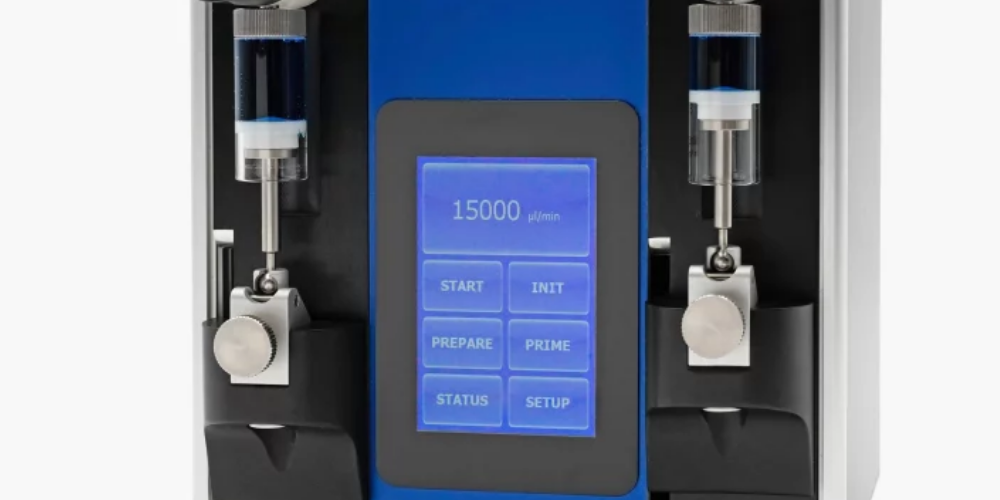
Our Educational Primer Series presents a deep dive into the technical elements that bring together the world of 4D Systems and what we have to offer. You’ll find that this information series, developed with our experts and engineers, is the perfect place to power up your knowledge and take your understanding of our hardware and software to the next level. As always, feel free to reach out and get in touch. The best learning is interactive and we’d love to hear from you.
File Downloads
What is Pulse Width Modulation?
Have you ever wondered how computers dissipate the amount of heat that gets generated by the CPU and other components? Compact electrical fans have been used for better ventilation and for cooling PCs. However, as fans produce noise levels that increase with the rotation speed, different methods were explored to control the speed of the motor and to ultimately quieten it. In recent years, the technology of controlling the power’s output has evolved significantly. Researchers have been looking for methods where a microcontroller or a switch would constantly control the amount of power a motor delivers, as mentioned in the above case, the fan in a PC.
So what is PWM and how does it work? And what are the ways to use the PWM outputs on your intelligent display?
What is PWM?
Pulse Width Modulation (PWM) is a method used for controlling an analogue signal using a digital source. The output voltage of the converter is controlled by modulating the width of the pulse. A lot of power electronic circuits are controlled by PWM signals of various forms.
How does PWM work?
A PWM signal consists of a duty cycle and a frequency. The duty cycle is the amount of time in which the signal is active or is in a ‘high’ or ‘on’ state. The duty cycle is expressed as a percentage or ratio of the total time it takes to complete one cycle. The frequency is calculated by finding out how fast the PWM completes a duty cycle. In other words, it means the frequency is determined how fast it switches between high and low states. By steering a digital signal off and on at a fast rate and at a particular duty cycle, the output will perform like a constant voltage analogue signal when providing power to devices.
The energy is distributed through a series of pulses rather than a continuously varying signal. By increasing or decreasing pulse width, i.e. how long the digital signal is held high, the energy flow to the motor shaft can be controlled.
PWM is found in a wide variety of applications, ranging from control circuitry to telecommunications to servomechanisms to power delivery and as an efficient voltage regulator.
Let’s take a look at the ways to use the PWM outputs on your intelligent display.
Dimming the LED backlight
One of the most popular applications of PWM is controlling the brightness of LED and LCD displays. The majority of LCD displays contain a LED backlight. LED lighting is used due to its efficiency, life span, and energy saving properties. Because the brightness and colour of an LED can affect the display, the LED lighting system requires an application to adjust the brightness and colour at the same time. PWM can be used to control the brightness level of the LED by turning the LED on and off at a specific rate. The naked eye cannot see these rapid oscillations of light, so even when the light is off we see the light as on.
Controlling the brightness of the display in laptops
Following the same principle, PWM is also used to regulate the brightness of the display in laptop monitors. When a monitor is set to maximum brightness the LEDs are glowing at full strength. If you reduce the brightness to 50%, the light intensity is lowered by inserting small pauses where the LEDs turn on and off for a very short time. When you reduce the brightness setting further, the pauses become longer, reducing the brightness further.
Controlling the speed of a fan (DC motor) in the CPU
As mentioned in the introduction, PWM can also be used to control the speed of a motor by regulating the
amount of power delivered. PWM speed control works by driving the motor with a series of on and off pulses and
varying the duty cycle of the pulses while keeping the frequency constant. It operates like a switch that constantly
cycles on and off, thereby regulating the speed of the fan.
Varying the width of these pulses can control the power applied to the motor and thereby varying the average DC
voltage applied to the motor’s terminals. By modulating the timing of the pulses, the speed of the motor can be
controlled. So longer the pulse is on, the faster the motor will rotate and the shorter the pulse is on, the slower
the motor will rotate. PWM operates like a switch that constantly cycles on and off, thereby regulating the speed
of the fan.
PWM has emerged as a solution for a wide variety of applications.


For a great range of LCD screens, visit: www.4dsystems.com.au/products/
Table of contents
Subscribe to our newsletter
Latest Case Studies

This case study unveils a practical application of embedded innovation, highlighting the process and outcomes of upgrading legacy systems in a technology-focused product line. Through strategic technological integration, the project not only uplifted product performance but also markedly improved customer satisfaction levels. The subsequent pages delve into various strategic and operational enhancements made, providing readers with a nuanced understanding of the concrete impacts and subtleties involved in a real-world, engineer-led embedded innovation initiative. A testament to blending traditional systems with modern innovation.

Duratec, specializing in liquid handling devices for various industries, aimed to simplify the control interfaces of their new product line. Partnering with 4D Systems, they integrated a touch display module enhancing user-centricity and operational efficiency. This transition replaced outdated control panels with an intuitive, modern interface without compromising on control capabilities via the RS232 interface. Three new devices were launched, improving user interactions through user-friendly touch displays, showcasing Duratec's commitment to innovation. This collaboration allowed for more straightforward control, monitoring, and interaction with Duratec's devices, ensuring a better user experience and meeting industry demands.

In the challenging process of creating an advanced 3D printer, BCN3D encountered an unexpected difficulty: finding an appropriate, user-friendly display module. Despite initial struggles, BCN3D discovered the solution in 4D Systems’ gen4 display modules. These modules offered superior resolution, processing power, and flexibility. Key to BCN3D's decision was the modules' easy integration via a serial connection and the Arduino-compatible library into their firmware. For its Sigma R17 3D printer, BCN3D upgraded to the gen4-ULCD-35DCT-CLB, a 3.5-inch Intelligent TFT-LCD display module with capacitive touch, further enhancing the user experience. The gen4 series of intelligent display modules perfectly matched BCN3D's requirements, offering innovative solutions in the sophisticated 3D printing space.

